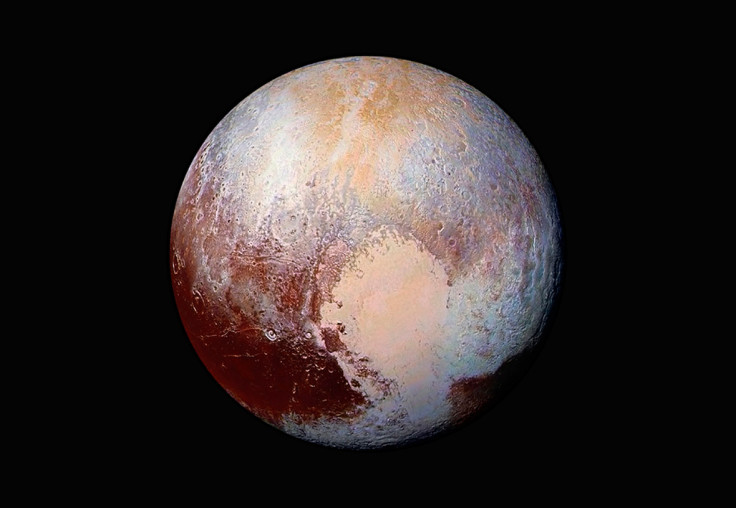Liquid ocean could be lurking beneath Pluto's icy surface
New Horizons data suggests Pluto's ocean may not have frozen yet.
Pluto could have a liquid ocean beneath its frozen surface, data from the New Horizon's spacecraft suggests. Researchers say that if the dwarf planet's ocean had frozen, the whole planet would have shrunk in size – but instead it has shown signs of expansion.
A team of researchers led by Noah Hammond, from Brown University, created a refined thermal evolution model of Pluto by incorporating data returned by New Horizons, which completed a flyby of the dwarf planet in July last year. At the time, data from the spacecraft indicated it once, or still had, a liquid ocean beneath its icy crust.
Images returned showed the planet had huge tectonic features on its surface including faults hundreds of kilometres long that reached up to four kilometres in depth. Scientists said Pluto could have had enough heat to melt part of the planet's shell. As it froze (the surface can reach temperatures of -240C), the ice would have expanded and created these surface tectonics.
"What New Horizons showed was that there are extensional tectonic features, which indicate that Pluto underwent a period of global expansion," Hammond said. "A subsurface ocean that was slowly freezing over would cause this kind of expansion."

But could it still be in liquid form today? In their latest study, published in the journal Geophysical Research Letters, researchers said that if this ocean had frozen millions of years ago, the planet would have undergone a global contraction. This is because the ice would have converted into a form known as ice II, which has a far more compact crystalline structure – meaning a smaller volume and therefore global contraction.
Hammond explained: "We don't see the things on the surface we'd expect if there had been a global contraction. So we conclude that ice II has not formed, and therefore that the ocean hasn't completely frozen."
The team said the formation of ice II can only happen if Pluto's shell is at least 260km thick – any thinner and the ocean could have frozen without becoming more compact. However, the model indicates this shell is more than 260km. "The possibility that you could have vast liquid water ocean habitats so far from the Sun on Pluto — and that the same could also be possible on other Kuiper belt objects as well — is absolutely incredible," Hammond said.

© Copyright IBTimes 2025. All rights reserved.






















